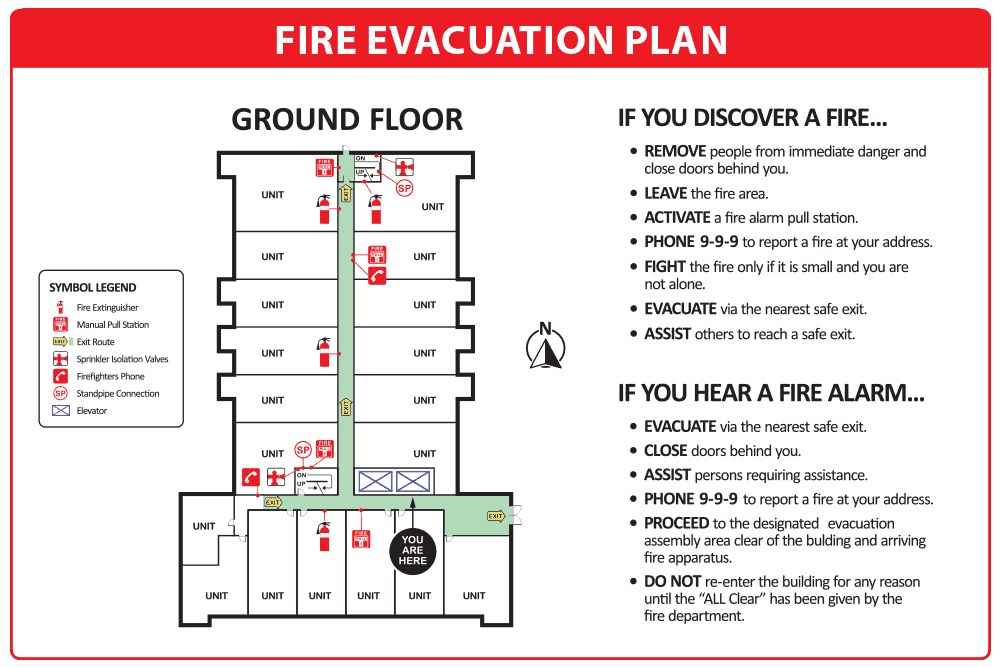What Should a Personal Emergency Evacuation Plan Contain?
A personal emergency evacuation plan, often referred to as a PEEP, is a customized strategy designed to ensure an individual's safe and timely escape from a dangerous situation. These plans are especially crucial for individuals with disabilities, mobility issues, or chronic health conditions that might impede their ability to evacuate independently or within standard timeframes. A well-crafted PEEP addresses specific needs, vulnerabilities, and environmental factors to optimize the chances of a successful evacuation. The development and implementation of such a plan require careful consideration, proactive planning, and regular review.
The overarching goal of a PEEP is to facilitate a safe and efficient evacuation during emergencies such as fires, natural disasters (e.g., earthquakes, floods), or security threats. It moves beyond generalized emergency procedures by tailoring the response to the unique circumstances of the individual. This personalization significantly enhances the effectiveness of the evacuation, reducing the risk of injury or harm.
Creating a comprehensive PEEP involves several key elements, each contributing to the overall effectiveness of the plan. The following sections outline the key components that should be included in a personal emergency evacuation plan.
Identification of Specific Needs and Limitations
The foundation of any effective PEEP lies in a thorough understanding of the individual's specific needs and limitations. This assessment should encompass physical, cognitive, and sensory impairments that could affect their ability to evacuate independently. For example, someone using a wheelchair will require accessible evacuation routes and assistance, while someone with impaired vision might need auditory cues or a sighted guide. Identifying these limitations is the first step towards developing a tailored evacuation strategy.
Detailed documentation of the individual’s physical abilities is paramount. This should include an assessment of their mobility, strength, endurance, and any related medical conditions. Consider factors such as the use of assistive devices (e.g., wheelchairs, walkers, crutches), the ability to navigate stairs, and any limitations in range of motion. This information will inform the selection of appropriate evacuation routes and the need for assistance.
Furthermore, cognitive and sensory impairments should be carefully evaluated. Individuals with cognitive disabilities may require clear and simple instructions, as well as consistent reminders and support during an evacuation. Those with sensory impairments, such as hearing or vision loss, will necessitate alternative communication methods, such as visual alarms or tactile warnings. Identifying these needs allows for the incorporation of specific strategies into the PEEP.
Medication requirements and potential medical emergencies should also be documented. The plan should include information about necessary medications, allergies, and emergency contact information for healthcare providers. In some cases, it may be necessary to store a supply of essential medications in an accessible location to ensure they are available during an evacuation. Clearly outlining potential medical needs ensures a more comprehensive and responsive emergency response.
This initial assessment should be conducted in a collaborative manner, involving the individual, their family members or caregivers, and relevant healthcare professionals. Open communication and a thorough understanding of the individual's needs are essential for creating a PEEP that effectively addresses their unique circumstances.
Designation of Evacuation Routes and Safe Havens
A critical component of a PEEP is the designation of primary and secondary evacuation routes, as well as identified safe havens or areas of refuge. These routes should be clearly defined, easily accessible, and free of obstructions. They should also take into consideration the individual's mobility limitations and any potential hazards that may be present during an emergency. Safe havens provide temporary refuge while awaiting assistance or further instructions.
The selection of evacuation routes should prioritize the most direct and accessible paths to safety. For individuals with mobility impairments, this may involve identifying routes that avoid stairs, utilize ramps or elevators, and provide sufficient space for maneuvering assistive devices. The routes should be regularly inspected to ensure they remain clear of obstacles and are adequately lit.
Secondary evacuation routes should be established as backup options in case the primary routes are blocked or inaccessible. These alternative routes should be equally accessible and well-defined, providing a reliable means of escape in unforeseen circumstances. Familiarity with both primary and secondary routes is crucial for a successful evacuation.
Safe havens or areas of refuge should be designated in locations that offer temporary protection from the immediate dangers of the emergency. These areas should be equipped with essential supplies, such as water, first-aid kits, and communication devices. They should also be easily accessible and clearly marked. Furthermore, safe havens should be in a location that can be readily reached by emergency responders.
The practicality of the designated routes and safe havens should be verified through drills and simulations. This allows the individual and their support team to familiarize themselves with the routes, identify potential obstacles, and refine the plan as needed. Regular practice is essential for ensuring a confident and efficient evacuation.
Establishment of a Support Network and Communication Protocols
A strong support network is essential for the successful implementation of a PEEP. This network should consist of individuals who are familiar with the plan, understand the individual's needs and limitations, and are willing to provide assistance during an emergency. Clear communication protocols should be established to facilitate timely and effective communication among members of the support network.
The support network should include individuals who are in close proximity to the person needing assistance, such as family members, caregivers, coworkers, or neighbors. These individuals should be trained on the PEEP, including the designated evacuation routes, safe havens, and communication protocols. They should also be aware of the individual's specific needs and how to provide appropriate assistance during an emergency.
Communication protocols should specify how and when to contact members of the support network during an emergency. This may involve the use of phone calls, text messages, or other communication devices. Clear and concise messaging is crucial for conveying essential information, such as the location of the emergency, the individual's current location, and any specific needs or concerns. The communication methods should consider the individual's communication abilities including any alternative communication devices they use.
Emergency contact information should be readily available and easily accessible. This should include the contact information for family members, caregivers, healthcare providers, and emergency responders. Consider providing the individual with a card or bracelet containing this information, as well as a brief summary of their medical conditions and medications.
Regular communication exercises and drills should be conducted to test the effectiveness of the support network and communication protocols. This allows for the identification of any weaknesses or gaps in the system, as well as the opportunity to refine the PEEP and improve coordination among members of the support network.
The plan should consider protocols for communicating with emergency responders upon their arrival. If possible, the support network should designate a point of contact to meet and guide emergency personnel to the individual’s location. This ensures a quicker response and minimizes potential delays.
In summary, a comprehensive personal emergency evacuation plan should encompass a detailed assessment of individual needs and limitations, the designation of accessible evacuation routes and safe havens, and the establishment of a reliable support network with clear communication protocols. Regular review and practice are essential for ensuring the plan remains effective and responsive to changing circumstances.
Personal Emergency Evacuation Plans Ps

Emergency Evacuation Plans Reliable Fire Security

Fire Emergency Procedures And Means Of Escape In Depth Croner I

Fire Evacuation Plan For 2024 Human Focus

Emergency Evacuation Plans Don T Be At Risk

Fire Emergency Procedures And Means Of Escape In Depth Croner I

Fire Emergency Evacuation Plan And The Procedure Firesafe Org

Emergency Evacuation Plans Don T Be At Risk

Emergency Action Plan Davis Ulmer Blog

Etool Evacuation Plans And Procedures Emergency Action Plan Elements Floorplan Demo Occupational Safety Health Administration








